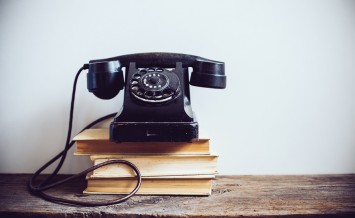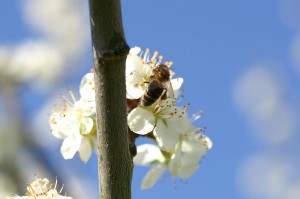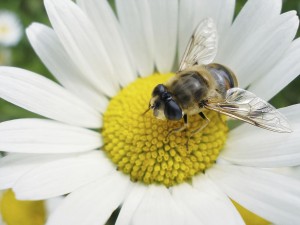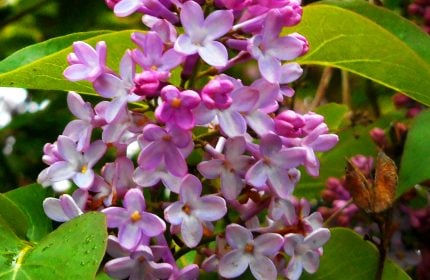Keep bees buzzing
As bee populations continue to dwindle due to bad weather, experts offer tips on how gardeners can help conserve these vital pollinators
Reports that our bee population is at crisis point as numbers have been hit by bad weather and particularly long winters should prompt responsible gardeners to protect our bees by creating a prosperous environment for them.
Last year’s annual survey by the British Beekeepers Association (BBKA) indicated an increase in losses of honey bees and the organisation is concerned that losses may be even greater this year if the long winter is anything to go by.
“Much longer winters mean that bees are potentially running out of stores,” says Gill Maclean, BBKA spokeswoman.
“We don’t yet know what the losses will be for this year but we are concerned that they are going to be greater than they were last year.”
Weather-related impacts such as cold spells affect colony development and queen-mating. Honey bees don’t forage in very cold or wet weather, so their winter stores were depleted last year.
The honey bee is the only bee to maintain a colony throughout the winter, reducing its colony size in autumn and relying on its stores of honey to last it through the winter months when it is too cold for foraging or there is no forage available. Some colonies may have since been lost simply by running out of stores.
However, gardeners can do their bit to help bees, says Maclean.
“Planting the right sort of plant is important and try to plant in drifts. There are so many bee-friendly plants including thyme, oregano, mint and viburnum. Plant some trees for bees as well, including spring-flowering cherries, apples, plums and pears.”
All blossoms are widely visited by bees including blackthorn, cherry, plum, damson and crab apple. Other trees that are widely visited are the horse chestnut for its nectar and sycamore for its pollen.
She also advises gardeners to set aside part of the garden as a decorative wildflower area which will be a magnet for bees, planting white and red clover, borage, thyme, bugle and other bee-friendly plants.
“Bees also need water, so you can do something like fill a pot lid with water and put stones in it and netting over it so that they can drink without falling in.”
Gardeners should make sure they provide a succession of bee-friendly plants which will flower between February and November, to give bees the best chance of building up their stores.
Last year, the Royal Horticultural Society (RHS) launched a guide as part of its Perfect for Pollinators initiative, listing more than 200 wildflowers, such as corncockle, teasel and wild parsnip, that provide plentiful pollen and nectar for pollinating insects.
It advises gardeners to:
:: Avoid plants with double or multi-petalled flowers, which may lack nectar and pollen, or insects may have difficulty in gaining access.
:: Never use pesticides on plants when they are in flower.
:: Where appropriate, British wild flowers can be an attractive addition to planting schemes and may help support a wider range of pollinating insects.
:: Observe the plants in your garden. If you know of plants with blooms that regularly attract insects, let the RHS know.
:: Choose flowers that bloom successively over the spring, summer and fall, such as coreopsis, Russian sage or germander, in order to provide pollen and nectar resources to the native bees of all seasons.
:: Encourage bees by keeping honey bees yourself or allowing a beekeeper to place hives in your garden. Nest boxes containing cardboard tubes or hollow plant stems, or holes drilled in blocks of wood will provide nest sites for some species of solitary bees. Such nests are available from garden centres or you can make your own (holes/tubes should be in a mixture of sizes with a diameter of 2mm-8mm). Place these nest sites in sunny positions. Some solitary bees nest in the ground, either in bare soil or short turf. They will find their own nest sites, so tolerate the small mounds of soil deposited by the female bees when they excavate their nest tunnels.
:: Provide nest sites for bumblebees: Bumblebee nest boxes can be purchased but they are often ignored by queen bumblebees. They prefer to find their own nest sites down tunnels dug by mice or in grass tussocks. The tree bumblebee, Bombus hypnorum, has recently colonised in Britain and will often use bird nest boxes
:: If you want to become a beekeeper, details of county beekeepers’ associations and training courses can be seen on www.bbka.org.uk
The Press Association
Latest posts by The Press Association (see all)
- Beatles documentary Let It Be to be released on Disney+ - April 16, 2024
- How to keep your money safe – as criminals ramp up AI tactics to steal consumer data - April 16, 2024
- Seasoned marathon runners give their best race day tips for first-timers - April 16, 2024
- What are heat pumps and could they help your home save energy? - April 15, 2024
- Trailer for Bridgerton season three teases new friends-to-lovers romance - April 12, 2024























